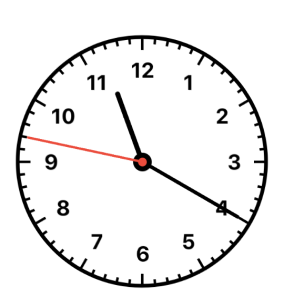Time-based Competition
• • ☕️ 3 min read
Competing in real-time
There is a landmark study by the Boston Consulting Group (BCG) that was published in the early 1990s about time-based competition. The study concluded that any company in an Industry which had a 2X time advantage over its’ competition would experience a 4X advantage in profit performance. In other words, if a company processes a mortgage application twice as fast as the competition, it is going to generate way more profit for its’ shareholders than other companies in the same Industry.
Think about that: 2x time drives 4x performance.
At Strategic Machines, we have been giving time a lot of thought recently, recognizing that value chains are about to be turbocharged. Our world runs by the clock, but what has caught our attention is the emerging requirement to compete not by the clock but in real-time.
Let’s step back for a minute and review briefly the time journey of our globally integrated economy. In the early 1900s, Frederick Taylor introduced the notion of synchronized operations with his set of scientific management practices. The “industrial revolution” was nascent, but the potential was captivating. Process was componentized into discrete steps, and efficiency was the watchword of management practices. A clockwork world emerged, and modern life accelerated. But while factories and logistics were optimized, office work lagged until a whole new set of management concepts was introduced in the 1980s by Michael Hammer. Dr. Hammer is the progenitor of business process reengineering. His perspective is captured in an article published by the Harvard Business Review in 1990, entitled “Reengineering Work: Don’t Automate, Obliterate”. With almost of 100 years of improving economic performance bookended by Taylor and Hammer, and empirical evidence underscored by BCG, companies were delivering value at every level of the enterprise through speed.
But we are at a new inflection point now, and one that requires the same critical thinking introduced by Dr. Hammer 30 years ago. Our real-time economy is no longer limited to synchronizing activities with the passage of time, but delivering an outcome at a point in time. We are not talking about fast-interval processes, like high-frequency stock trading, but rather no-interval processes like real-time sensors. When an event occurs, a function is triggered in real-time. Time in the past drove synchronized events. Events in the future deliver synchronized outcomes. We are no longer bound by time, but rather are bound to well-defined events occurring simultaneously with millisecond precision. The movement of products, the presence of customers, the state of the environment, the discount of a price, the message for a consumer and others are all events composed for the real-time enterprise. It is a whole new class of opportunity in serving customers, requiring obliteration before automation.
At Strategic Machines, we operate at the edge of the network, helping clients to navigate the real-time economy. Give us a call and let us help you plan your journey to compete in real-time.